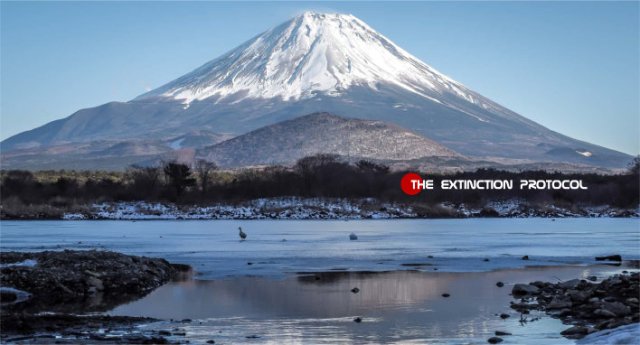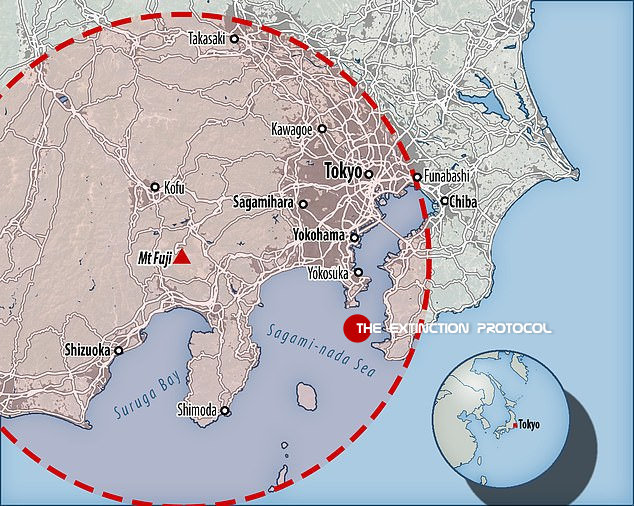
The Japanese government has released the results of a simulation showing what could happen if Mount Fuji erupted again today. The project was organized by the Central Disaster Management Council, which ran models predicting eruptions at 92 different vent locations on Mount Fuji. While lava could reach the outer edges of Tokyo, the primary danger will come from ash, which could fall through the air for several days, or even weeks. In the worst-case scenario, more than 17.3 billion cubic feet of volcanic ash would fall over Tokyo and the surrounding areas, according to a report in The Asahi Shimbun. That would be equivalent to 10 times the amount of debris that had to be cleared from the city after the Tōhoku earthquake and tsunami in 2011.
According to the report, the first signs of ash falling could be felt in as little as three hours and the city would be effectively shut down within 24 hours because of the ash. With just a one-inch layer of ash, the simulation says roads would become unusable for all two-wheel drive vehicles because for lack of adequate friction. Even a comparatively light ashfall of around one-fifth of an inch would effectively lower visibility to the point where driving would become impossible. Rail service would be suspended almost immediately as even a small amount of ash on the tracks would make it unsafe for trains to operate.
Airports would be extremely restricted, as just 0.08 inches of volcanic ash would render runways unsafe for landing planes. The ash would also disrupt mobile phone towers, cause power outages, and render thermal power plants inoperable after just two inches of ash. Perhaps the worst effects would be on the population, who would face severe respiratory damage, especially those with existing conditions like asthma. Many wooden homes would also be threatened with structural damage from the unexpectedly heavy weight of accumulated volcanic ash. The group estimate it would take at least three days and a crew of 1,000 bulldozers to clear pathways wide enough just for emergency vehicles to begin driving again.

Mount Fuji has erupted around 180 eruptions over the last 5,600 years but the majority have been small and had little effect on nearby residents. The last major eruption occurred in 1707, what’s called the ‘Hōei’ eruption after the the Edo calendar period during which it took place. That eruption produced more than 28.2 billion cubic feet of volcanic ash, which fell through the air for two weeks and traveled as far as 62 miles. That eruption led to a number of secondary disasters during the following year, including flooding in multiple areas where volcanic ash formed natural dams that blocked the Sakawa River. According to the Council, the simulations are intended to help the local government be prepared for the next disaster to minimize as much unnecessary damage as possible. ‘A mistake in the early response could leave tens of millions of people stranded, and it may not be possible to distribute supplies,’ University of Tokyo’s Toshitsugu Fujii, who worked on the project, told The Mainichi. –DM

Comments
Post a Comment